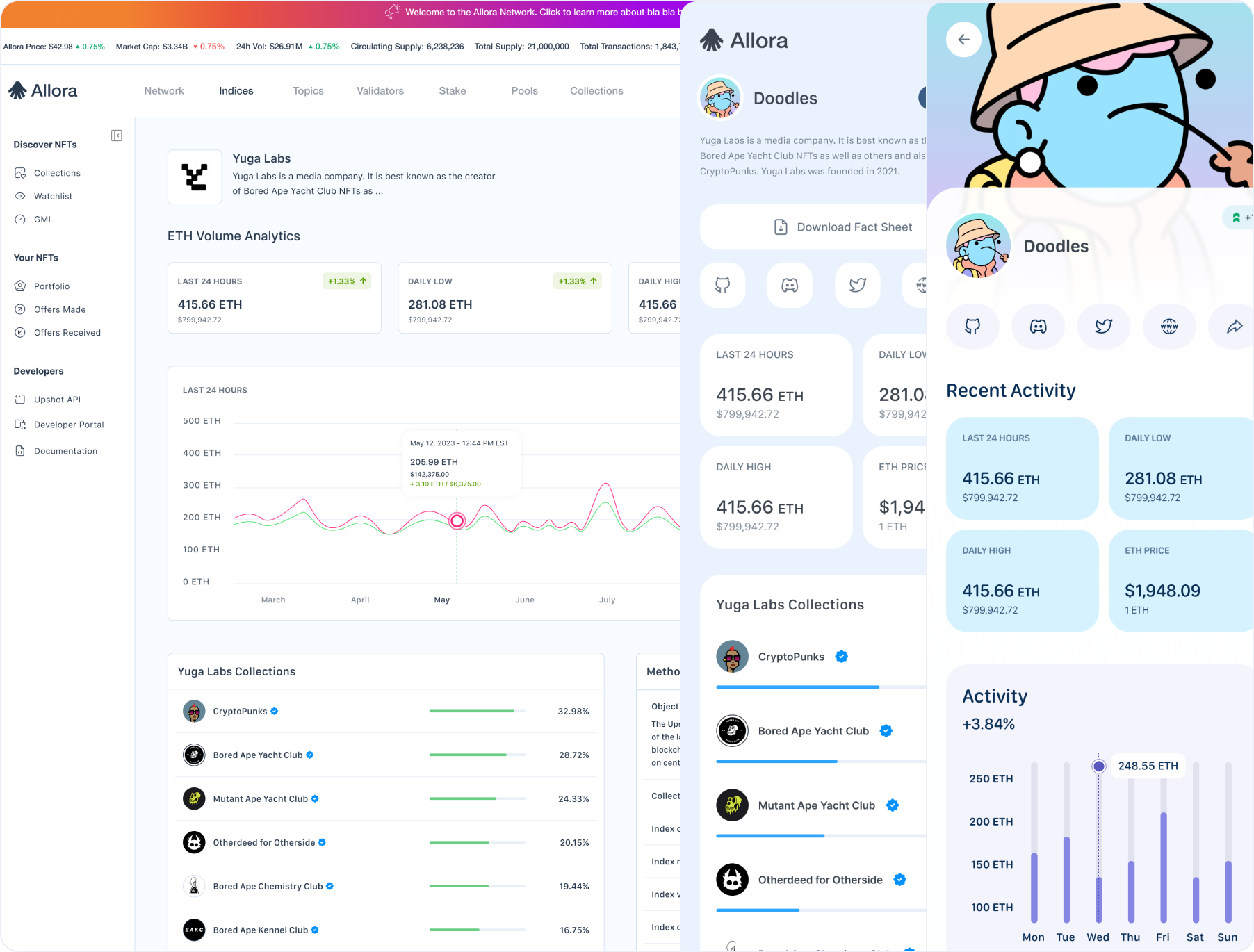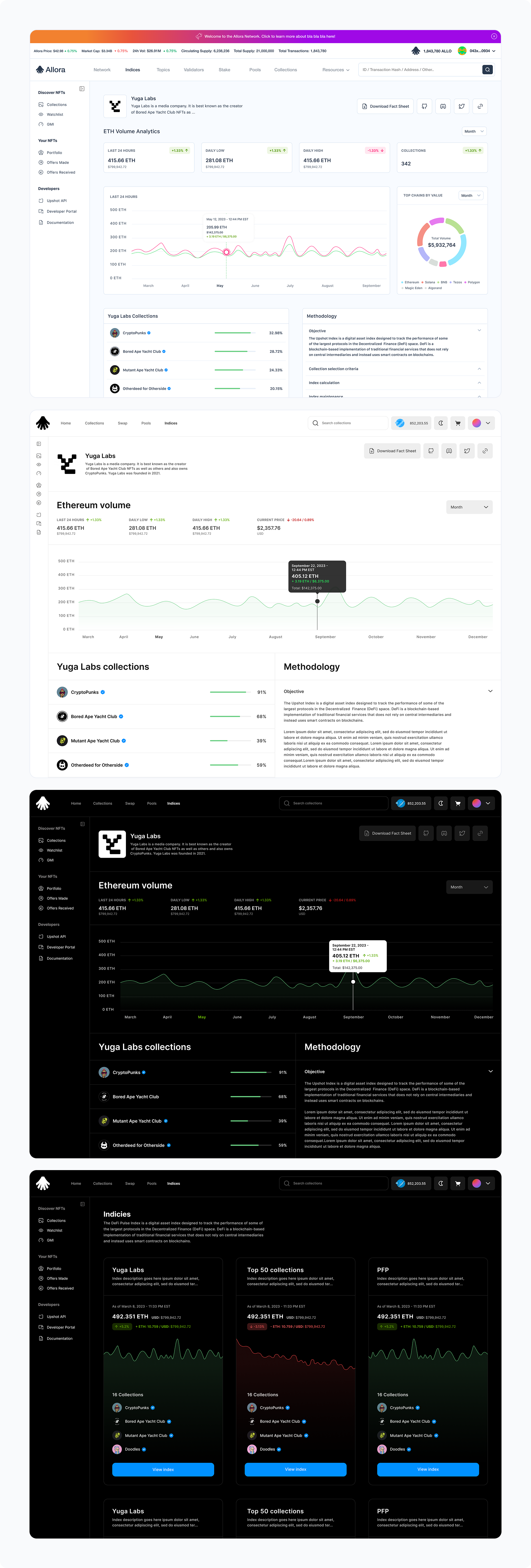Project Background
This platform was envisioned to be a comprehensive hub for users interested in the NFT market, providing transparent and accessible data on popular collections, performance indices, trading volumes, and detailed collection information. As the lead product designer at a web3 crypto startup, I spearheaded the design and development of an NFT Indices application. This platform was envisioned to be a comprehensive hub for users interested in the NFT market, providing transparent and accessible data on popular collections, performance indices, trading volumes, and detailed collection information.
Project Goal
The NFT market, while booming, suffered from a lack of centralized, digestible, and reliable data for the average investor or enthusiast. Users struggled to:
Identify truly popular or influential NFT collections amidst a sea of new projects.
Understand the broader market trends and performance beyond individual collection hype.
Access aggregated volume and pricing data in a user-friendly format.
Find consolidated, trustworthy information about specific NFT collections.
Process
My design process followed a human-centered approach, involving research, ideation, prototyping, testing, and iterative refinement:
User Research & Analysis:
Understanding the needs and pain points of target users (both seasoned crypto traders and new NFT enthusiasts).
Information Architecture:
Structuring complex data (NFT collections, indices, metrics) into an intuitive and navigable layout.
Wireframes and Prototyping:
Translating concepts into tangible user flows and interactive prototypes.
User Interface Design:
Creating a visually appealing, consistent, and functional interface.
Phase 1: Market Analysis:
I conducted an extensive analysis of existing NFT analytics platforms, crypto data aggregators, and traditional market indexing sites to identify best practices, common pitfalls, and unmet user needs.
Phase 2: Competitor Analysis:
Deep dive into products like OpenSea, Dune Analytics, Blur, and Rarible to understand their strengths and weaknesses in presenting NFT data.
Phase 3: Stakeholder Interviews:
Collaborated closely with product managers, leadership, and business development to define project goals, technical constraints, and business requirements. Gained insights into the strategic vision for the product and market positioning.
Phase 4: User Flows & Information Architecture:
Mapped out core user journeys, focusing on how users would navigate from high-level market overview to detailed collection insights. Defined the hierarchy of information, prioritizing discoverability and clarity.
Phase 5: Product & Leadership Alignment:
Regularly presented design concepts and prototypes to the product team and leadership for feedback and strategic alignment. Ensured the design vision met business objectives and technical feasibility.
Phase 6: Engineering Collaboration:
Maintained a continuous feedback loop with engineers from the initial stages. Discussed technical limitations and implementation complexities to ensure designs were buildable and optimized for performance
Phase 7: Stakeholder Feedback:
Incorporated feedback from various stakeholders, including marketing and community teams, to ensure the product resonated with the intended audience and effectively communicated its value proposition.
Phase 8: User Testing / Usability Testing:
Mapped out core user journeys, focusing on how users would navigate from high-level market overview to detailed collection insights. Defined the hierarchy of information, prioritizing discoverability and clarity.
Popular NFT Collections Dashboard:
A dynamic, real-time feed of trending NFT collections, ranked by volume, floor price changes, and social sentiment.
NFT Indices:
Creation of custom indices (e.g., Blue Chip NFT Index, Gaming NFT Index) to provide a broader market perspective, displaying historical performance charts and constituent collections.
Volume & Pricing Data:
Comprehensive charts and tables showing trading volume, average price, floor price, and market cap over various time frames.
NFT Collection Information Pages:
Dedicated pages for each collection, featuring: overview, price and volume history, rarity and tools, social links.



